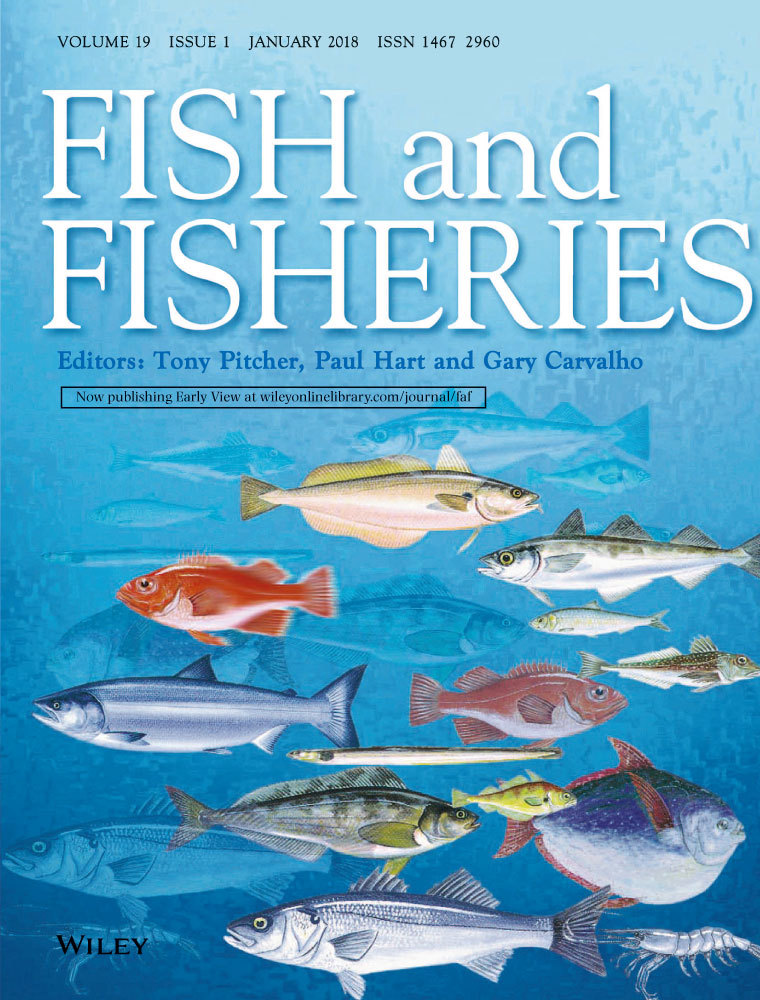All the Boats on the Ocean. How Government Subsidies Led to Global Overfishing Chicago University Press, Chicago, USA, 2017. pp, 211. ISBN-13: 9780226443379 (Hbk); GBP 34.00, USD 45.00, plates. Index.
The title and subject of All the Boats on the Ocean echoes Finley's 2011 book All the Fish in the Sea, reviewed in Fish and Fisheries (2012) 13 (2): 236–237. The present book is mostly about how US Cold War foreign policy used fisheries to make alliances with countries that were in danger of coming under the influence of the USSR. Government subsidies were not always favourable to the US fishing fleet and in some cases, such as the Southern Californian tuna fleet, the US policy towards the tuna fishery in the Pacific was such that it could not operate profitably and was forced to close down. In addition, the US State Department was so keen to keep Iceland on side after the Second World War that it gave its fisheries significant price advantages when exporting fish to the US. This aid made it very difficult for the New England fishing industry to compete.
Both of the books by Finley deal with the same material and this means that All the Boats in the Ocean repeats much of the information about Japanese and Soviet fishing also covered in her earlier book. The major difference between the two books is that the earlier one deals explicitly with the way in which the US, directed by Wilbur Chapman, hijacked the concept of Maximum Sustainable Yield to support its foreign policy. This story is only touched on briefly in the new book.
I enjoyed reading this well-written book, and it covers interesting examples, although there is some repetition of material that could have been edited out. Chapters deal with the after affects of the Second World War on the restructuring of the Japanese fishing fleet, the influence of tariffs, industrialization, treaties and imperialism on the post-war development of both the US and global fishing. The penultimate chapter discusses the movement towards the Law of the Sea conferences and the establishment of Exclusive Economic Zones, something resisted for a long time by the US and other north Atlantic countries as it was thought that these closed areas would restrict not only their fishing boats but also movements of military and merchant ships.
It is always difficult to know the motivations of an author, but I wonder why Carmel Finley wrote two books. As mentioned, this second book repeats a great deal of what is in the first. When I reviewed All the Fish in the Sea I commented that there was much material in that book about Japanese fisheries in the Pacific that did not appear to be central to the book's main thesis. In my view, a better book would have combined the material in both so cutting out redundancy and making the central messages clearer.
One of the main conclusions that I took away from the book is the reckless way in which fisheries were developed in the post-WWII era. This applied to the US attempts to restart the Japanese Pacific tuna fishery as well as to the USSR which invested hugely in a distant water fishing fleet which scoured the world's oceans for anything that could be caught. Little attention was paid to the ability of the fish populations to support the level of fishing effort that was applied. Humanity is now paying for this profligacy and is having to rapidly back peddle in an attempt to rebuild fish stocks and to match fishing effort to the capacity of stocks to sustainably produce fish.




